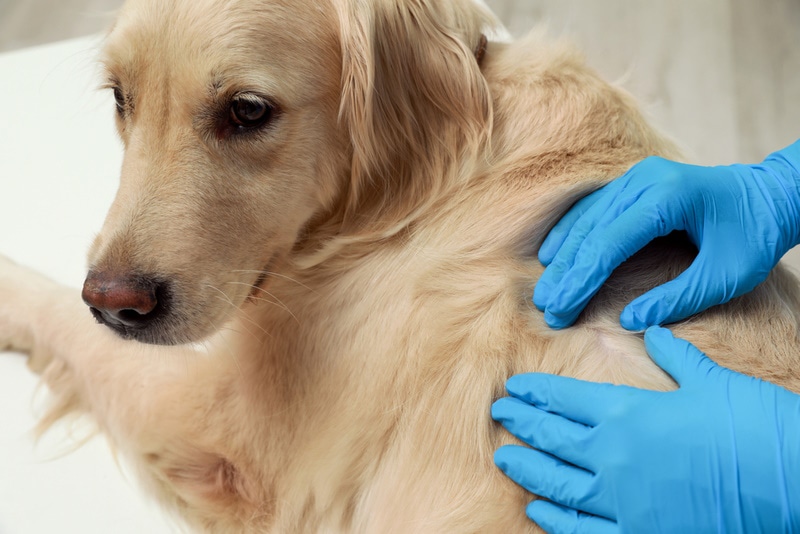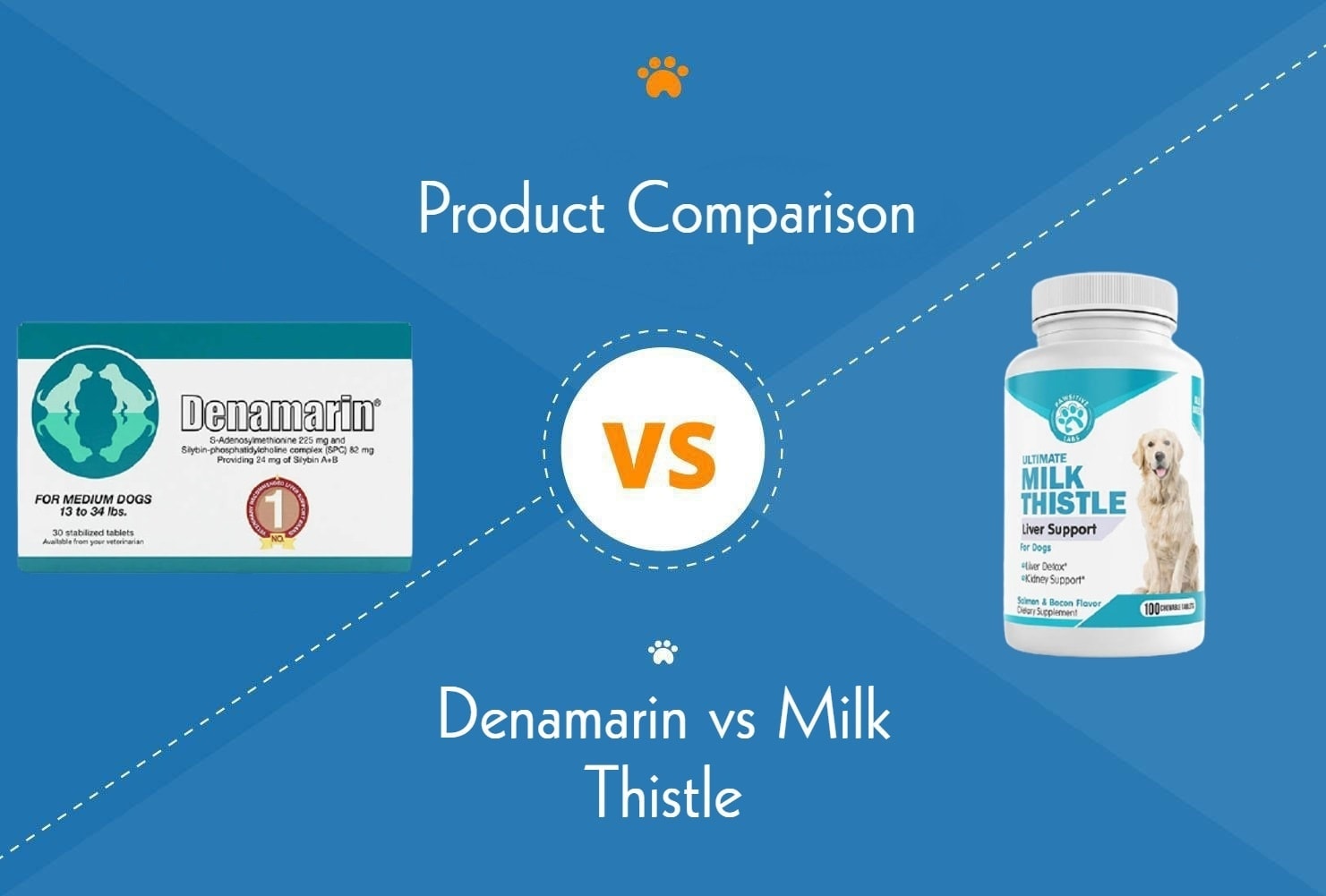Feline Herpes: Causes, Signs & Treatments (Vet Answer)
Updated on
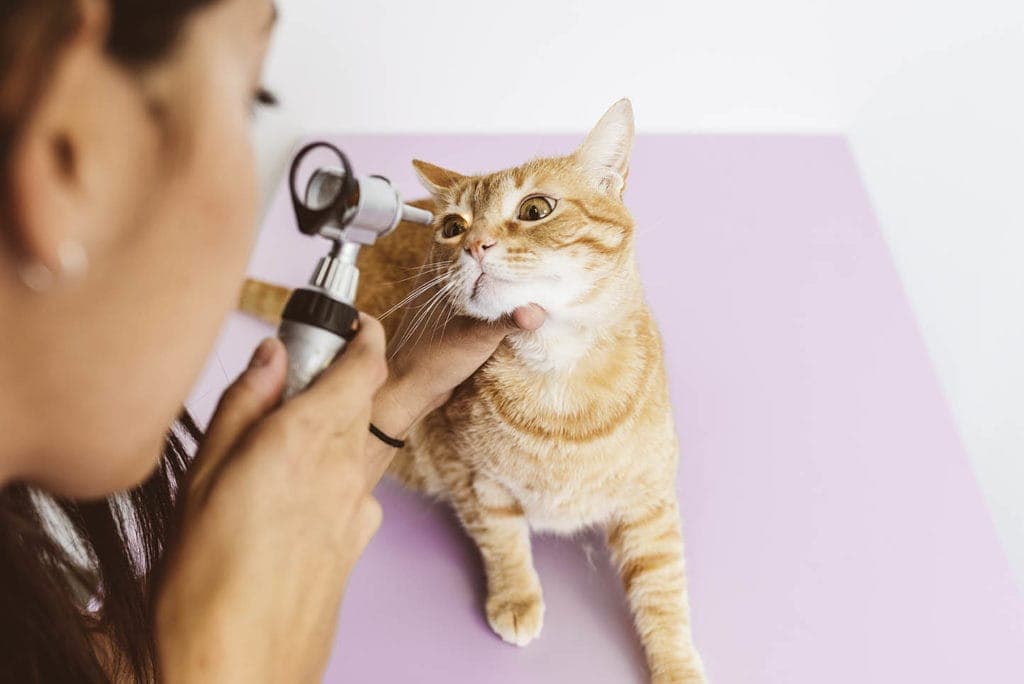
Click to Skip Ahead
A sneezing cat with discharge from their eyes and nose may have an upper respiratory infection (URI). One cause of URI in cats is the feline herpes virus. While the herpes virus in humans can cause sores around the mouth and genitals, it presents with respiratory and ocular signs in cats. Herpes in humans is caused by a different form of the virus than the one affecting cats. Once a cat is infected with the virus, it becomes a lifelong carrier of the disease and can transmit it to other cats if the virus is reactivated and shed in the saliva and secretions.
What Is Feline Herpes?
Feline herpes is caused by a virus categorized as feline herpes virus type-1 and may present as upper respiratory signs in cats. The virus is species-specific, meaning it only infects cats, both domesticated and wild. Cats of all ages are susceptible to the disease, and it is a common cause of conjunctivitis, which is inflammation of the tissues surrounding the eyeball, including the inner lining of the eyelids and the third eyelid (nictitating membrane). Feline herpes may also be known as feline viral rhinotracheitis (FVR) because it is a disease primarily affecting the respiratory system.
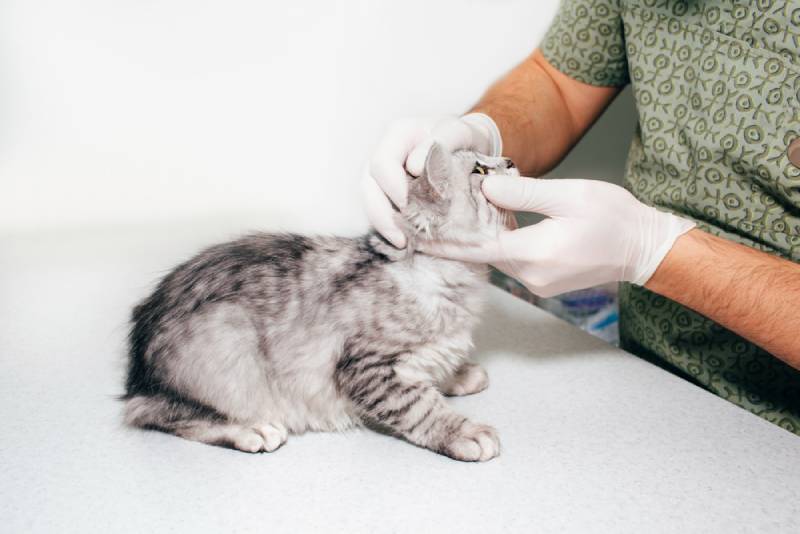
What Are the Signs of Feline Herpes?
Clinical signs of feline herpes typically originate in the upper respiratory tract, which involves the nostrils, nasal passages, mouth, throat (pharynx), voice box (larynx), and the eyes.
- Sneezing
- Nasal discharge
- Nasal congestion
- Eye discharge
- Conjunctivitis
- Corneal ulcers
- Excessive blinking and squinting
- Fever
- Lethargy
- Decreased appetite
- Enlarged lymph nodes
Eye and nasal discharge may range from clear and runny to thick secretions containing pus (purulent yellow-green discharge).
What Are the Causes of Feline Herpes?
Infected cats shed virus particles in saliva, respiratory, and eye secretions. Healthy cats may become infected after coming in direct contact with the secretions from sick cats or by encountering objects in the environment that contain virus particles (water and food bowls, toys, etc.). The virus usually remains infectious for only a few hours once it is outside of the body. The desiccation, or drying process, of saliva and discharge, kills it. The virus may remain infectious for up to 18 hours if the secretions remain moist, however.
Cats of all ages are susceptible, but those with weakened or compromised immune systems are particularly at risk (young, old, ill, etc.). A cat may begin showing signs of herpes 2–5 days after being infected with the virus. The course of the disease may last 10–20 days. During this time when the cat is actively shedding virus particles, they are contagious to other cats.
An unfortunate aspect of feline herpes virus is that all infected cats become lifelong carriers of the virus. While the virus may be present in an inactive, or latent, state, it can reactivate and cause clinical signs in cats that are stressed or ill. These carrier cats once again shed the virus and can transmit it to healthy cats. This is tricky because not all carrier cats will show signs of respiratory disease when actively shedding the virus. Kittens can acquire the disease from their mothers after birth, even if the infection is latent. Signs may not become apparent until after a few weeks following parturition and are usually severe in kittens.
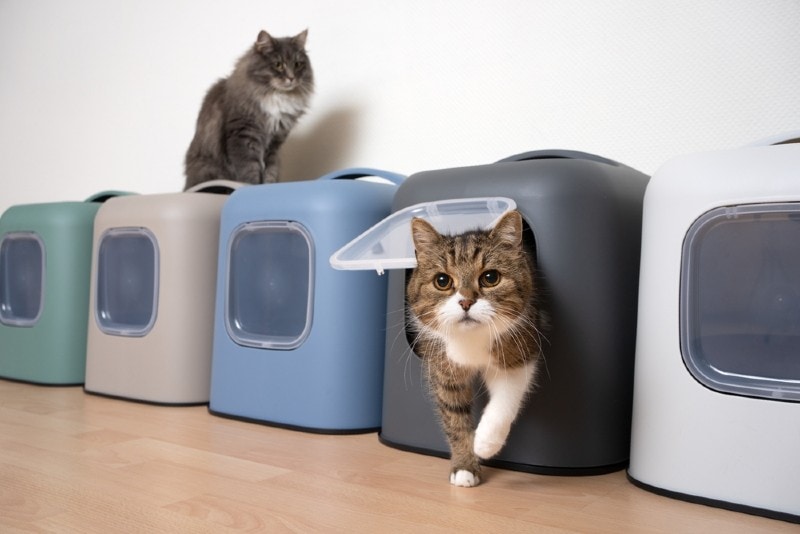
How Do I Care for a Cat With Herpes?
Any cat exhibiting signs of respiratory or ocular disease should follow up with a veterinary exam and evaluation. Cats can be susceptible to different agents causing upper respiratory signs, so a thorough veterinary exam is necessary to pinpoint a diagnosis. Your veterinarian will also assess your cat’s previous medical history in addition to their clinical signs and exam findings to determine a cause for the illness.
To help diagnose your cat’s condition, your veterinarian may look for an eye infection or a corneal ulcer by using a special eye stain called fluorescein. This stain adheres to the defect in the cornea (the ulcer) and presents as a bright yellow-green color when the rest of the dye is flushed out of the eye using sterile eye wash. Cats with conjunctivitis caused by herpes may have decreased tears or eye dryness, so your veterinarian may want to evaluate your cat’s tear production by using a Schirmer tear test to help confirm a diagnosis.
A more accurate method to diagnose feline herpes virus is through polymerase chain reaction (PCR) testing of secretions from your cat’s nose, eyes, and mouth (throat). This testing will confirm the presence of herpes viral DNA in an actively infected cat shedding viral particles. If your cat is a carrier of the virus and is not shedding particles in their secretions (currently in a latent state), this method of testing may not be reliable because PCR can only detect the viral DNA when it is present in the sample.
Treatment for feline herpes is usually based on clinical signs. In cats with secondary bacterial infections, antibiotics may be prescribed. More severe signs, such as dehydration and lethargy, may require hospitalization. While there is no cure for the disease, vets can help lessen the frequency and severity of occurrence through treatments to manage it.
- Antiviral eye drops
- Oral antiviral medication, such as famciclovir
- L-lysine
- Doxycycline (liquid form only)
- Azithromycin
- Amoxicillin-clavulanate
- Probiotic FortiFloraⓇ
- Polyprenyl immunostimulant (VetImmunePI™)
- Nebulization therapy for cats with congestion
If your cat has eye and nasal discharge and crustiness, you can use a warm, damp, clean washcloth or tissue to gently wipe it away. Congested cats may have a decreased appetite because their sense of smell is impaired, which is similar to the stuffiness that you may experience when suffering from a cold. You can help entice your cat’s appetite by offering strong-smelling palatable foods, such as those available in canned or pâté forms, also known as “wet” foods. Gravy and broth food toppers made specifically for cats may also be an option. If your cat still has no interest in eating, your veterinarian may prescribe an appetite stimulant.
How Do I Prevent Herpes Infection in My Cat?
Prevention includes vaccinating and maintaining regularly scheduled booster vaccinations for FVR as recommended by your veterinarian. This is included in your cat’s core set of FVRCP vaccines. While the vaccine does not provide 100% protection against the virus, it will help shorten the course and intensity of the illness should your cat contract it. Cats previously infected with the virus and currently in a latency period can also benefit from receiving booster FVRCP vaccinations a few times per year. The boosters may help prevent the reactivation of the virus and the reoccurrence of the disease.
In addition to keeping your cat up to date on vaccinations, minimizing exposure to other cats can also help prevent transmission of the disease. This involves keeping your cat indoors and/or providing safe spaces for outdoor exercise, such as a catio, or training your cat to walk on a leash. In this way, you can minimize or eliminate the risk of your cat coming into direct contact with another cat. If your cat has had a herpes infection, it is best to keep them indoors to prevent further spread of the disease.
Washing your hands before and after interacting with a cat can help prevent the spread of virus particles from one cat to another.
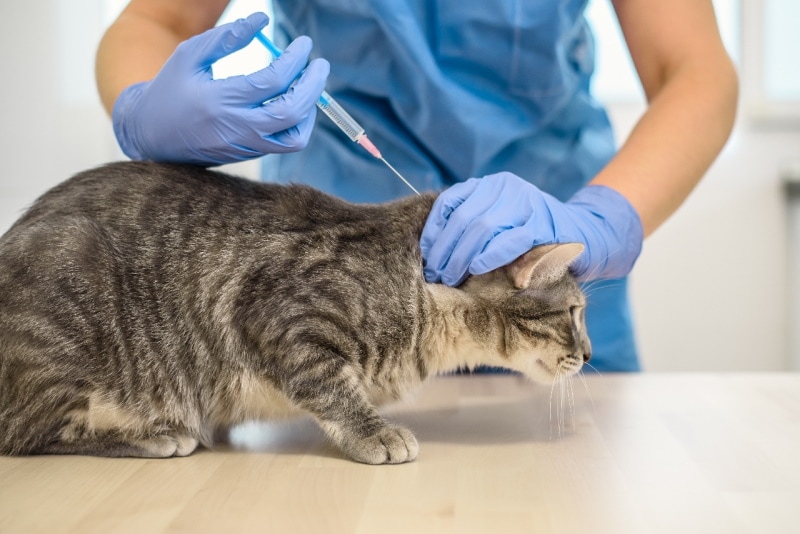
Frequently Asked Questions
Can I Catch Herpes From My Cat?
No, you cannot catch feline herpes, as the virus is species-specific and occurs only in cats.
How Long Do Cats With Feline Herpes Live?
Most cats with the disease can live a normal lifespan if it is managed properly, their FVRCP vaccines are kept up to date, and stressors are minimized to prevent reoccurrence.
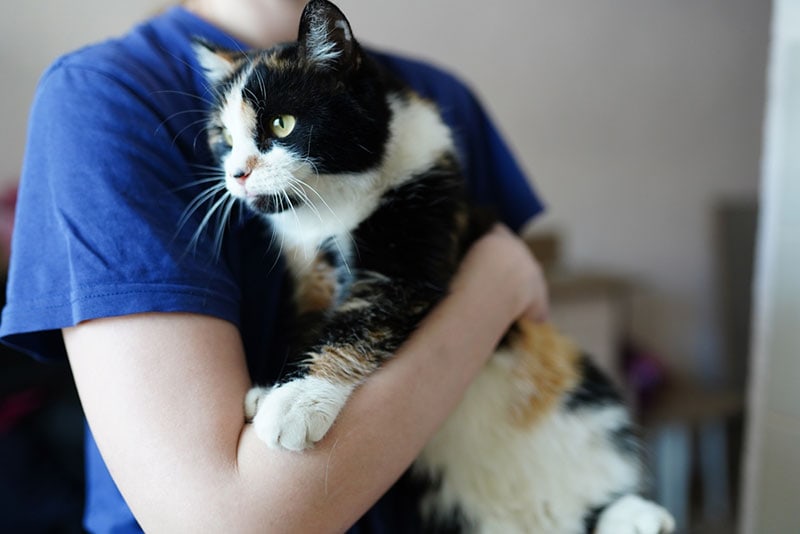
Conclusion
Feline herpes virus can cause respiratory and eye disease in cats. The virus is transmitted through saliva, nasal, and eye discharge. Cats become lifelong carriers of the virus once they contract it. While there is no cure, signs can be managed with treatments. Prevention includes keeping your cat’s FVRCP vaccines current, minimizing your cat’s interactions with other cats, and maintaining hygiene practices when interacting with multiple cats.
Featured Image Credit: santypan, Shutterstock




